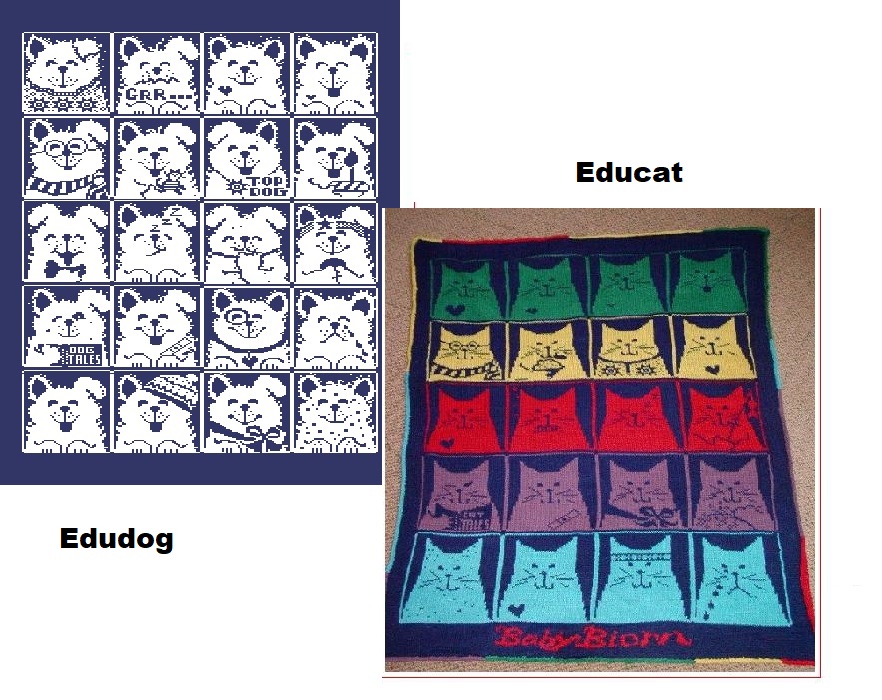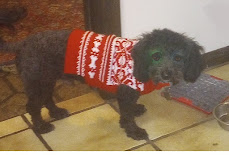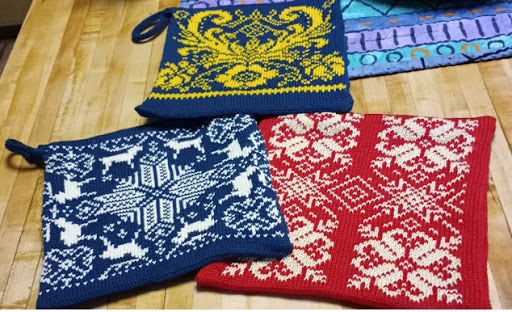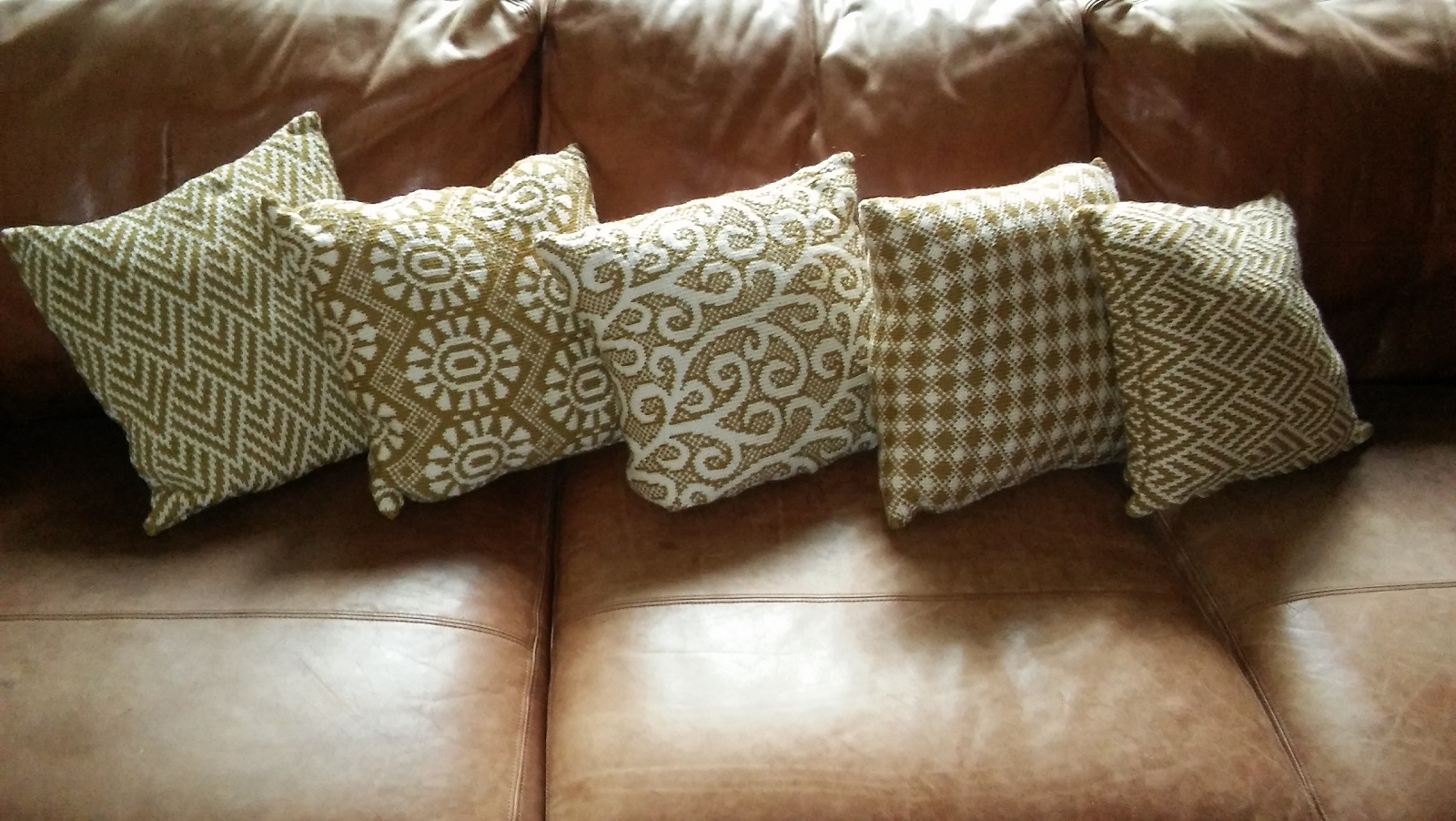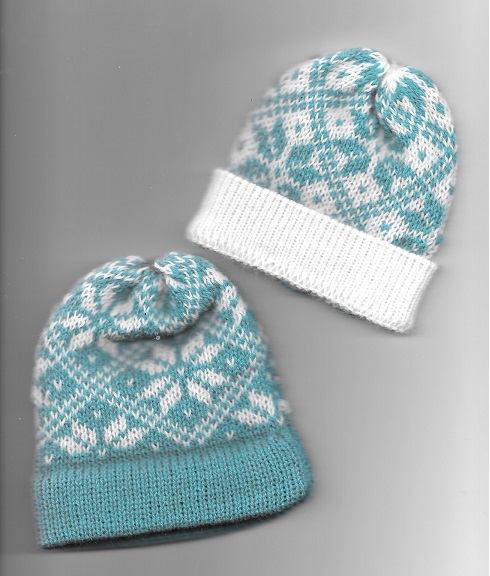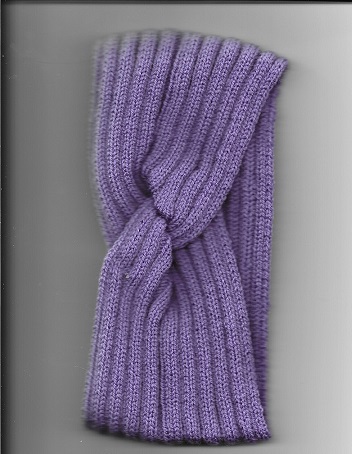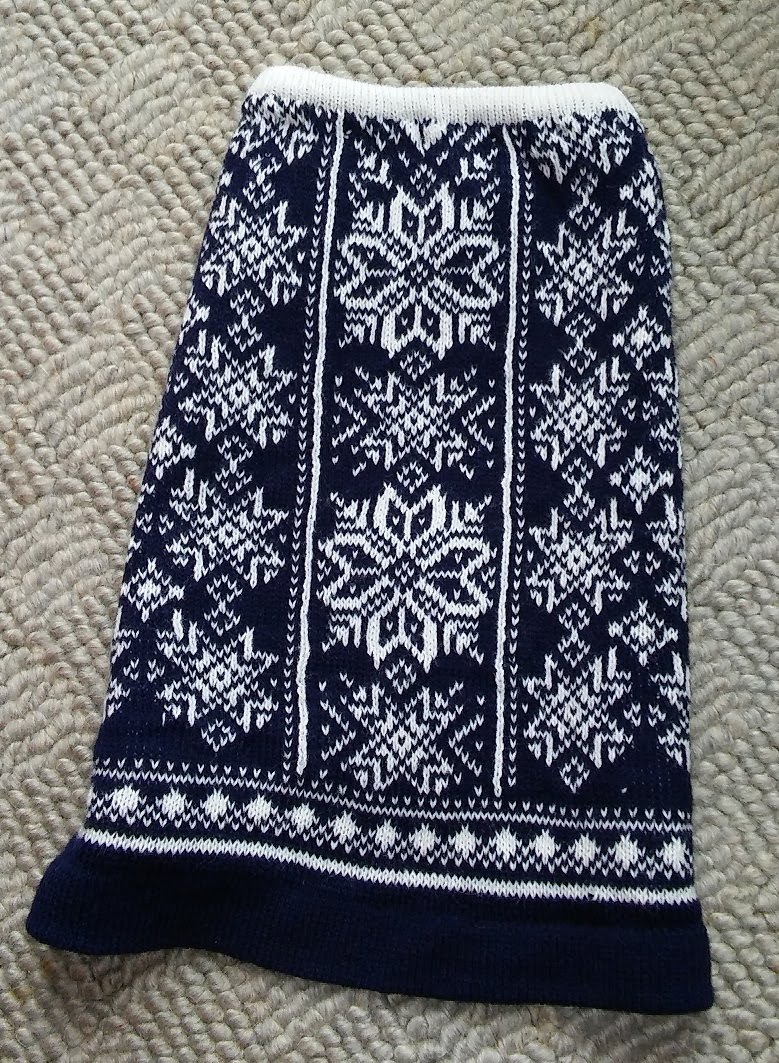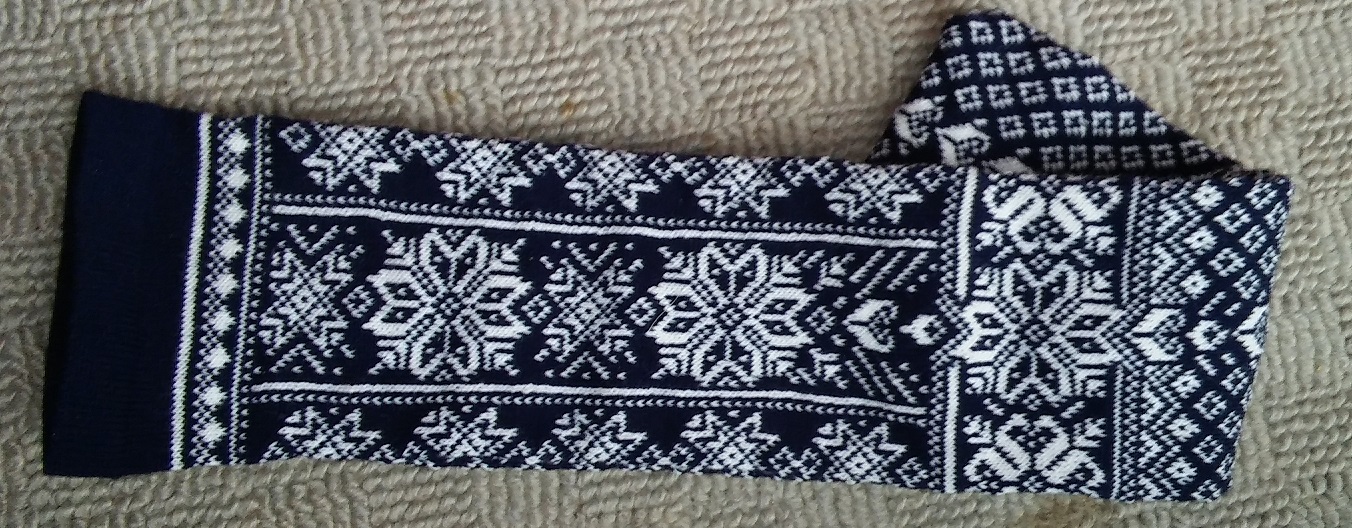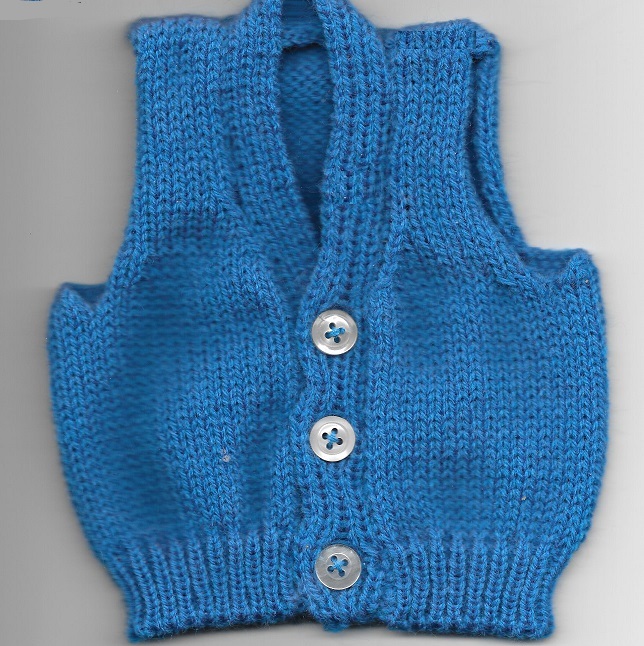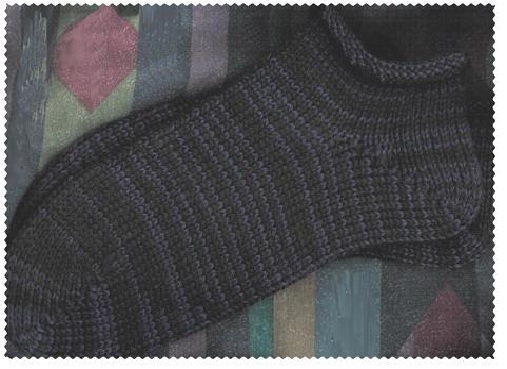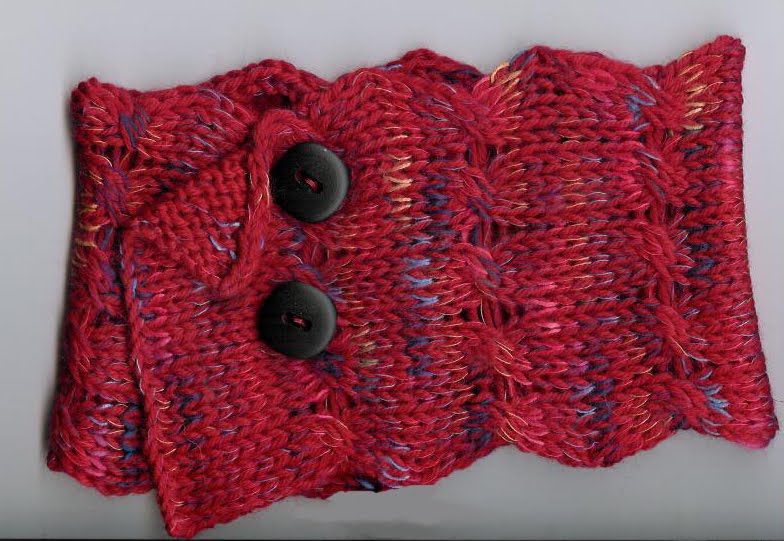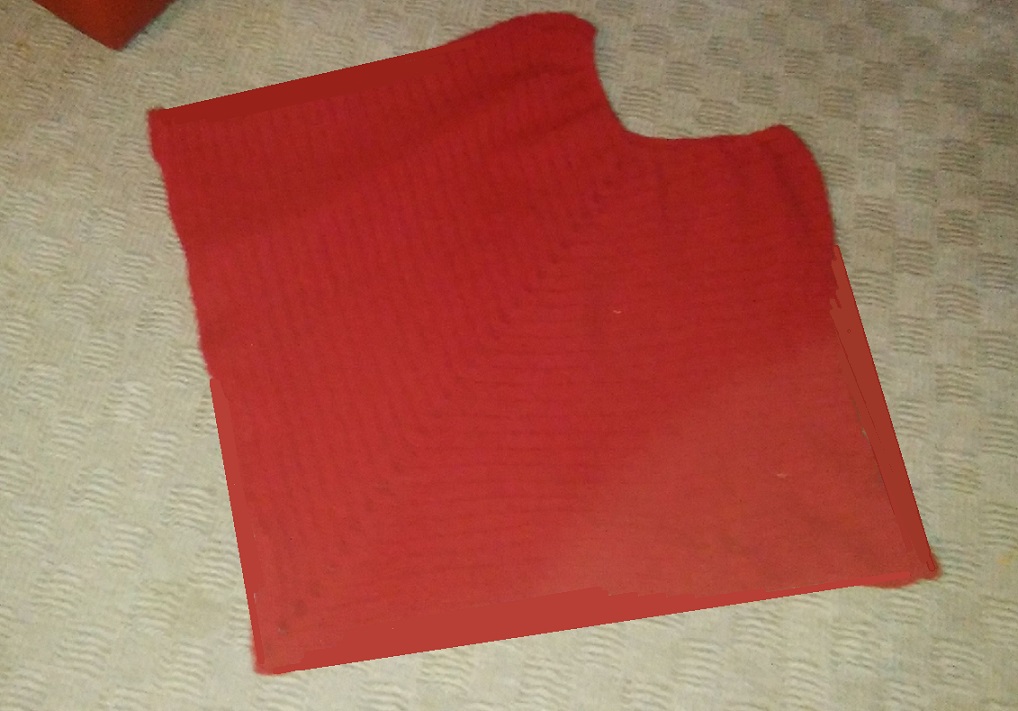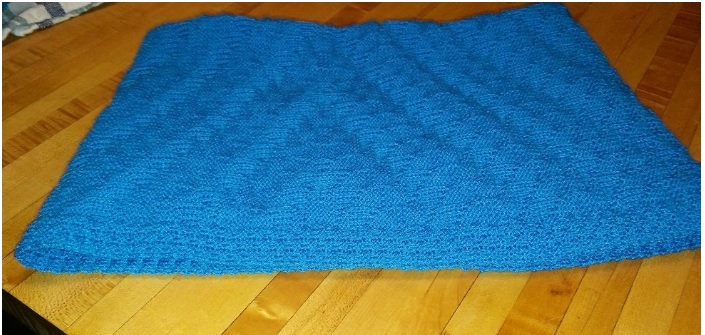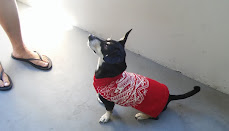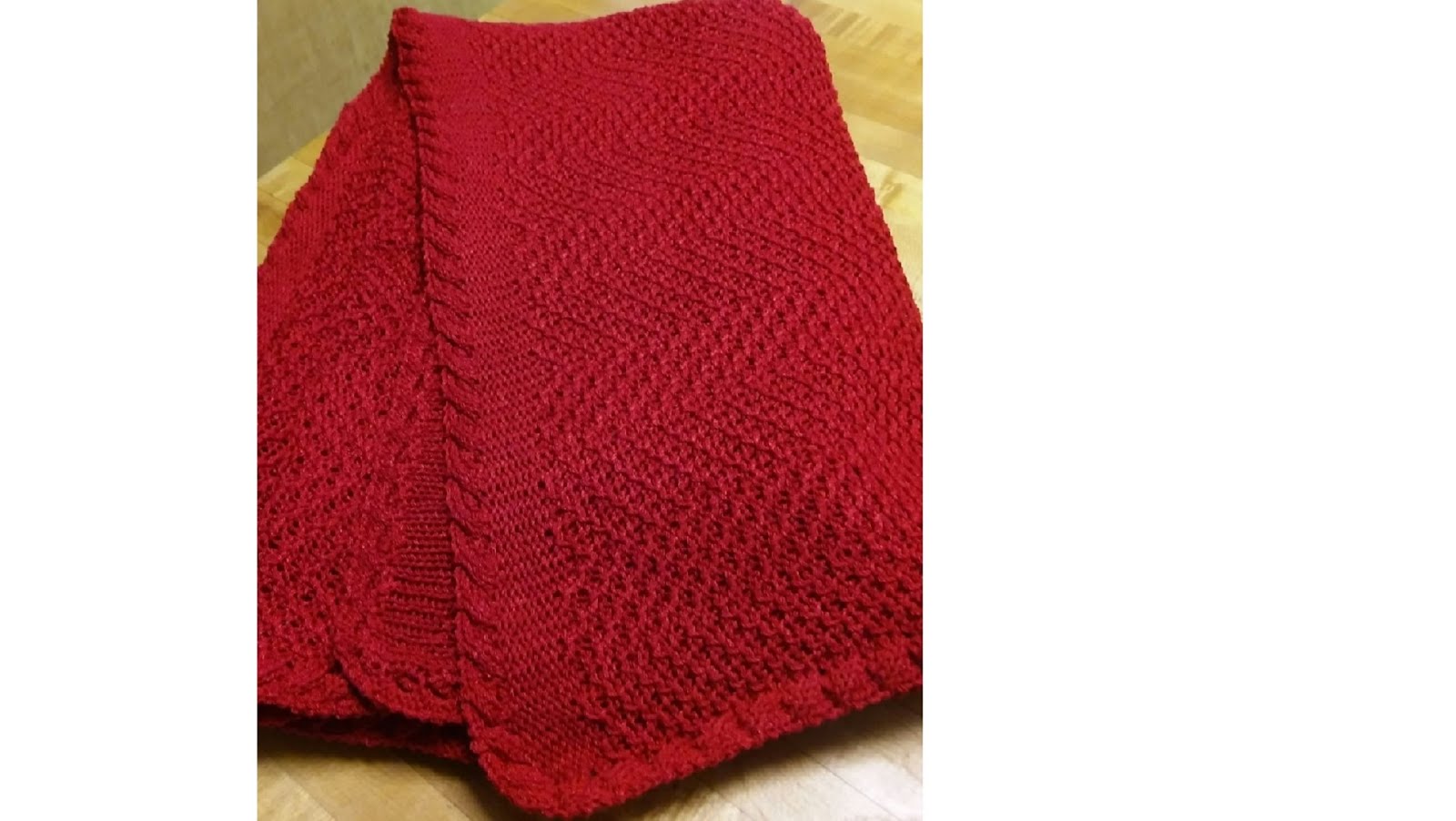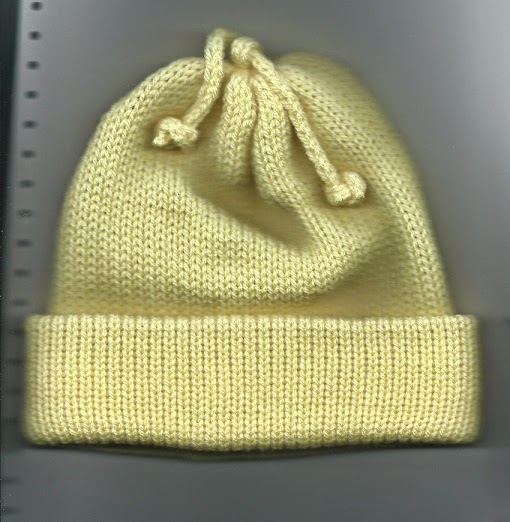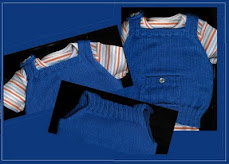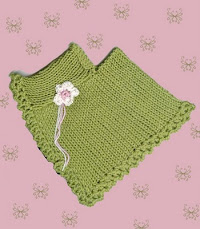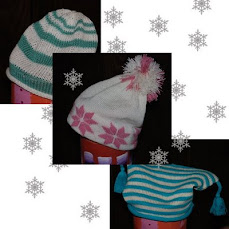skip to main |
skip to sidebar
BABY CARDI--- Size 3-6 months
This is for a standard gauge machine, only one size (sorry), T 6 with 7st and 10 rows to the inch. Before I started the pattern, did a hem for the body pieces. I cast on with waste yarn the specified number of stitches, knit 12 rows T 5, one turning row of T 7, 12 rows T 6. Hung a hem and knit one row at T 8. Back to T 6 and RC 000. Knit as instructed to the top and took the final st off on waste yarn. For the sleeves, I did a hem with the same tensions but only 8 rows. For the front bands I picked up one whole st with the back side facing me and did the same kind of hem with just 6 rows. Same as the front plackets for neckline at the very end after pieces were seamed. I did full fashioned decreases on all pieces to make seaming easier. Still debating whether to have a button closure at the top. The sleeves are long enough to fold over as a cuff and lower as the arms grow. PS-- DAK (where I created the pattern) names things from the perspective of the wearer, but as you sew the pieces together you'll see how the tops of the sleeves slant to create a nice neckline. By changing the tensions for the hems, I didn't have any problems with curling. Don't like to steam acrylics too much.





The yarn I used was Trenzado, I think. It was a mystery yarn given out for free at a guild meeting. If you'd like to try this pattern, you could use any yarn that knits close to the gauge.
The hats I did are super simple. Ewrapped on 110 stitches T 4 knit 8 rows. Increased one stitch both sides. RC 000, T 6 knit 78 rows. Tried something different for the tops which saved some time. I tranferred two stitches over two needles. (2 in work, 2 out of work) to decrease. Then knit 2 rows still T6 and took off on a threaded double eyed needle to cinch in and sew up the seam. Makes a nice top! Then I knit a 4 needle I cord for 160 rows, T4, to make a bow for the top. Hid the ends of the I cord up into the I cord. Tied the I cord into a bow, tacked it down well and hid the sewing ends on the inside.
Our guild has a challenge to its members to knit as many charity items as is our age. Have done this before and it IS quite a challenge. (I'm 39, after all.) I think I'm about half ways there. Have about 8 months to go.
Here's yet another way to make warm mittens. I have a lot of wool on cones, but mostly not enough of any one color to make a garment. So I decided to try this approach...
1. I knitted up blanks---like 170 stitches x 200 rows with my 100% wool. I did do a permanent cast on and cast off. Some people don't when they knit blanks, but I didn't want to take the chance of things unraveling and getting wound around anything in the washing machine. I used every needle on my standard gauge machine, but any machine works. Try the loosest tension to help the felting.
2. I did two cycles in the washing machine to get the fabric felted really well.
3. Found a template on the internet for making mittens out of fleece. This is size 2 to 4. Cut it out of paper for a pattern.
4. Once dry, I pinned the pattern onto the felted material and cut out 4 pieces for each set of mittens.
5. I sewed around the doubled pieces at about 1/4" seam allowance. My sewing machine didn't like this very much because there wasn't much for the feed dogs to catch onto and push forward. The doubled fabric was pretty thick too. A walking foot probably would have helped things along.
6. I clipped the seam wherever there was a curve so that it would turn to the right side better.
7. Cut a piece of fabric for each mitt about 1 inch by the circumference of the cuff (plus an inch to turn back and hide a raw edge). Sewed this on by hand to not further irritate my sewing machine. Adds a little decoration.
8. I cord (Not felted) about 20" long to thread through the sleeves so that the mitts won't get lost. Attached to side of mitts.
Did 2 pairs----but I'm sure they were more labor intensive than just knitting the %^&&*^ things. I just had to try it and maybe you will find it more fun than knitting them outright.
Darn. I was going to be a better blogger this year and a whole 5 weeks have gone by. I knit a shawl for my sister-in-law for Christmas and of course forgot to photo it. I did a simple triangle and used one of Diana Sullivan's Enchanted Edges. Really pretty. Lots and lots of rows, though. And I made some of Kris Basta's doubled wool felted slippers on my bulky machine for my brother-in-law because he's always cold due to Parkinson's. And, let's see...a 1 x 1 rib scarf for my son. That's about it for home-made knitted presents. I had too much to do to prepare for Christmas company. Seems like ages ago now, but it was a wonderful time. Keeping up with the little one was an adventure.
Our machine knitting guild knits for many different charities. My favorite one is the MN Visiting Nurses. They help new mothers who don't otherwise have a lot of resources. I thought it would be nice for them to give each new mother a tiny teddy bear. I was inspired by this one I saw on Ravelry. Hand knit, easily converted to machine knit. If you want to make some, directions follow.
I
got my idea here: Simple Knit Bear
The
Knitting Way: A Guide to Spiritual Self-Discovery 
by
Linda Skolnik and Janice MacDaniels
www.theknittingway.com
www.facebook.com/theknittingway
©
2012 Janice MacDaniels
www.theknittingway.com/simpleknitbear.pdf
(hand knitting version)
because
everyone needs a little someone to love.
 Machine:
Any; Gauge: Any; Yarn: Any;
Other materials: Fiber fill. How accommodating is that?! (I'll
give my info as one example at the end.)
Machine:
Any; Gauge: Any; Yarn: Any;
Other materials: Fiber fill. How accommodating is that?! (I'll
give my info as one example at the end.)
Directions:
Body---Figure out with the yarn and machine you are using what stitches
and rows would be needed to produce a rectangle that is about 6”
wide and 8” long. Ewrap on and knit this rectangle. Transfer
every other stitch to its neighbor and leave an 18” yarn tail.
Take the stitches off on this piece of yarn. Cinch up the
stitches---this will be the top of his head. If you can't get the
stitches tight enough, sew back and forth to cover up the hole. Now
with the same yarn, do a mattress stitch a little more than 1/3 down
the length for the head. Generously stuff with fiber fill so
the head is firm. Now take this same yarn and wind around twice to
make a neck. (See picture on the left above.) Cinch it in and knot
off. Don't cut yarn. Now finish mattress stitching the rest of the
seam but don't close the bottom yet. Let the yarn dangle for later
use. Ears: Hang stitches on the machine where one ear would
be, knit a few rows and bind off. Leave a yarn tail of about 8”.
Sew around the ear with a whip stitch and pull a little on the last
stitch. The ear will curl to the front a little. Secure the end and
run it down through the head to hide. Hide the other yarn end in the interior. Repeat for other ear. Now
stuff the body firmly with the fiberfill. Fold in the bottom
about 3/8” and stitch closed with the rest of the yarn tail you
abandoned using an invisible kind of seam. Make a belly button:
Thread about 8” of yarn doubled onto your needle. Come up through
the stuffing and make a French knot. When you go back through the
knot, hide the yarn end in the stuffing and snip. Arms and legs:
Use a separate piece of yarn to define the arms and legs. Use a
back stitch and sew all the way through front to back. Hide yarn
ends in the interior. Scarf: CO about 8-10 stitches, knit
enough rows to go around the neck and tie a bow. The knitting will
fold in on itself and be quicker to knit than an I cord. You can, of
course, knit a fancier scarf or tie a pretty ribbon around his neck.
MY
specifics: Standard Gauge machine, mystery cotton yarn I've used for dishcloths, T 3, Cast on
50 stitches, knit 100 rows. Ears, 6 stitches, 6 rows. Scarf, 8
stitches 150 rows. Recommend that you knit at a tighter tension than
you might usually use for the yarn so that the fiber fill doesn't
show through. You could decrease at the end of the ears and make it
look like a cat rather than a bear. Optional: embroider face
details. I think he's cute enough plain. You could use the purl side
as the right side if you like it better. Mine's a little fatter than
the example. I might need to work on the ears a little.... This was just bear #1. Many more to come.







